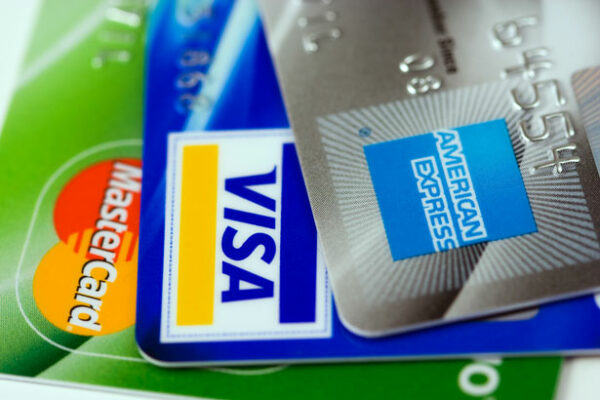American consumers are facing a terrible one-two punch in the pocketbook. The prices of goods have steadily risen as the Federal Reserve, hindered by massive spending coming out of Washington, D.C., have been unable to control inflation while credit card interest rates have begun to climb, making it harder for all of us to pay our bills.
USA Today writes, “During the pandemic, millions of Americans paid off credit card debt with stimulus money they received. At the same time, they avoided accumulating more debt because lockdowns and restrictions prevented them from spending money on things like vacations.
That led to a drastic decline in balances. From the last quarter of 2019 to the first quarter of 2021, credit card debt declined from $930 billion to $770 billion, a 17% decrease.
Along with lowering their overall credit card debt, Americans also got better at paying their full monthly bill on time during the crisis.
Two years into the pandemic, the percentage of U.S. credit card balances that were seriously delinquent — or more than 90 days late — fell to 3% compared to 5% before COVID-19.
Now that percentage is starting to creep up again and stands at more than 4%.”
“Because the Fed has been raising rates aggressively over the past year, that really has a direct pass through to your credit card rate,” Ted Rossman, a senior analyst at Bankrate.com who focuses on the credit card industry, told ABC News.”
“A lot of people may not have enough income coming in to support day-to-day expenses, so it lands on the credit card,” he added. “That becomes a very persistent cycle of debt, unfortunately.”
“The average credit card interest rate is 21.90% for new offers and 19.07% for existing accounts,” according to WalletHub’s Credit Card Landscape Report. “The average interest rate among new credit card offers has increased by nearly two percentage points since 2010.”
Added to the fact that “almost half of credit card holders (46 percent) carry debt from month to month,” according to a recent Bankrate survey, Americans may be looking at some serious financial trouble.
Luckily, NerdWallet has offered some serious advice to nip this problem in the bud, if you are one of the 46 percent seeing credit card bills starting to dangerously rise.
“Pay more than minimum
Credit card issuers give you a monthly minimum payment, often 2% of the balance. Remember, though: Banks make money off the interest they charge each billing period, so the longer it takes you to pay, the more money they make. The average amount of credit card interest being paid is rising as a result of Federal Reserve rate hikes and increasing amounts of revolving credit card debt. It’s estimated that U.S. households that carry credit card debt will pay an average of $1,380 in credit card interest this year, according to the study.
Debt snowball
The snowball method of paying down your debt uses your sense of accomplishment as motivation. You prioritize your debts by amount, then focus on wiping out the smallest one first. When you’ve paid off that, you roll that payment into the amount you’re paying toward the next smallest, and so on. Like a snowball rolling down a hill, you’ll gradually make bigger and bigger payments, ultimately eliminating your debt.
Debt avalanche
Similar to the snowball approach, an avalanche approach starts with listing your debts. But instead of paying off the card with the lowest balance first, you pay off the card with the highest interest rate. It can be a faster, and cheaper, method than the snowball method.
Automate
Automating your payments is an easy way to make sure your debts are being paid so you avoid racking up additional costs in late fees. If you’re practicing a debt snowball or debt avalanche approach, however, you will have to be a little more hands-on to make sure you’re contributing exactly what you want to each account.”
[Read More:



